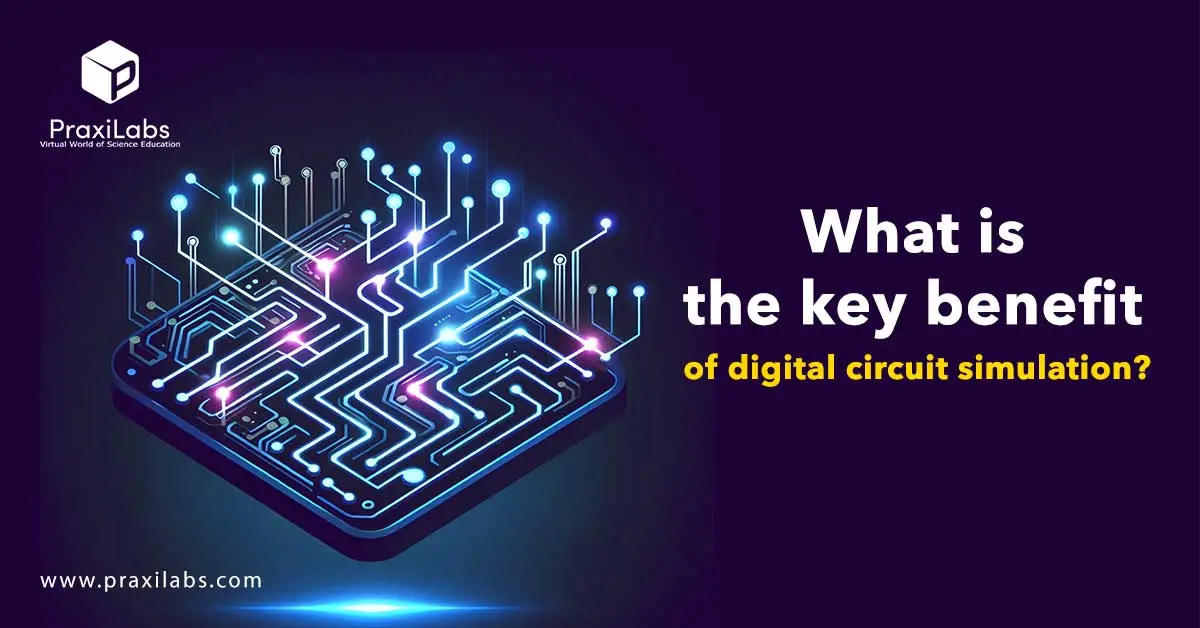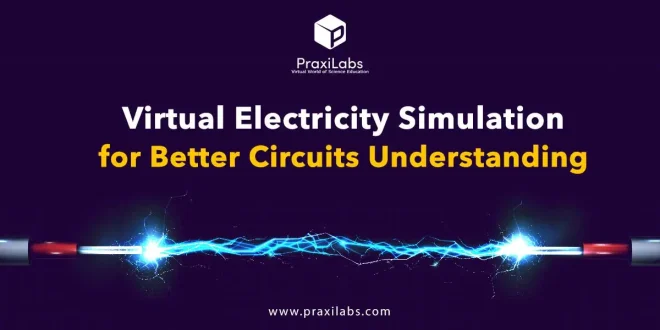Last Updated on November 27, 2025 by Muhamed Elmesery
Understanding how circuits work has never been easier, thanks to virtual electricity simulations. These interactive digital tools let students build, test, and tweak circuits in a safe, visual environment—making abstract electrical concepts clearer than ever.
With instant feedback, error-free experimentation, and zero risk of accidents, virtual simulations give learners the freedom to explore electricity at their own pace and truly grasp how circuits behave in real life.
Table of Contents
What is an electricity simulation?
Electricity simulation is a digital environment that simulates electrical systems and concepts or circuits to predict and verify their behavior without the need to build a physical prototype.
It allows students, teachers, and engineers to experiment with electricity safely, without needing physical equipment.

What is the key benefit of digital circuit simulation?
Using online digital electrical circuit simulations offers numerous benefits for both students and educational institutions. Here are its key advantages
Visualizing Invisible Concepts
With a virtual physics lab, abstract electrical concepts such as current flow and component behavior can be visualized, helping to bridge the gap between theory and practice and providing students with a deeper understanding of the subject.
Safe and Cost-Effective
There is no need for expensive laboratory equipment—students can perform electrical circuit simulation experiments using their own devices. There is also no need to worry about potential hazards (such as electrical, thermal, or laser risks).
Interactive Learning and Skill Development
Students learn electrical circuit concepts in an immersive and interactive environment, where they can modify variables and see the results immediately.
Virtual labs enhance critical thinking and active learning skills, rather than merely engaging in passive observation.
Comparing virtual and physical circuits lab
The following comparison table shows the differences between virtual circuit labs and physical circuit labs:
| Aspect | Virtual Circuit Labs | Physical Circuit Labs |
| Safety | No risk of electric shock or component damage. | Higher risk of shocks, burns, and short circuits. |
| Cost | Very cost-effective; no physical components are needed. | Expensive equipment, maintenance, and replacements. |
| Accessibility | Available anytime, anywhere for all learners. | Limited to lab schedules and physical presence. |
| Experiment Setup | Fast, one-click setups and resets. | Manual wiring takes time and effort. |
| Error Feedback | Instant, visual feedback for learning. | Manual measurements; errors take longer to diagnose. |
| Learning Experience | Great for learning concepts safely and confidently. | Essential for mastering real hardware and tool handling. |
Why have circuit simulators become a need for lab safety?
Online electrical simulators have become a need for lab safety because they reduce real lab dangers and accidents, and allow students to understand the electrical principles and perform their electricity experiments in a safe environment without exposing themselves to any dangers.
The main purpose of conducting experiments using circuit simulators is to let students make mistakes without touching live electricity.
Using circuits simulators provides other several benefits such as:
- They reduce the risk of electric shock accidents.
- They allow testing of hazardous or advanced circuits
- They eliminate lab equipment and tools damage.
- They prevent lab fires.

PraxiLabs : The best virtual electricity simulation tool
At PraxiLabs, our vision is to build the most effective and engaging scientific educational platform in the world. We offer a variety of experiments that enhance learning through practical and interactive experiences.
PraxiLabs serves as an effective alternative to traditional laboratory environments (electrical simulation software) during financial constraints and limited resources, ensuring that students receive comprehensive and hands-on education.
Our virtual labs features:
Scalability and Customization:
We provide flexible solutions that can be tailored to meet your institution’s goals, curriculum standards, and diverse student needs.
Comprehensive Question Bank:
The question bank at PraxiLabs gives teachers the tools needed to design accurate and customized assessments that seamlessly align with course objectives and learning outcomes.
This feature enables educators to go beyond generic tests, offering flexibility, fairness, and full control in evaluating students’ progress—ensuring assessments are accurate, interactive, and tailored to each learner’s needs.
PraxiLabs – Simulations Questions Bank
Flexibility and Accessibility:
The PraxiLabs electrical circuit simulation program is available anytime, anywhere—on desktops, tablets, and smartphones.
Instant feedback and progress tracking:
While performing online electrical simulations, students receive hints, model answers, and instant feedback at every stage. Teachers can also track progress in real time through detailed insights.
What are electrical simulations offered by PraxiLabs?
PraxiLabs offers a wide range of laboratories from different scientific fields, providing a broad spectrum of learning opportunities.
As an electricity simulator online. we provide online electricity simulator virtual laboratories for physics experiments in electricity such as:
Kirchhoff’s Laws
By the end of the experiment, your students should be able to:
- State Kirchhoff’s laws for electric circuits.
- Apply Kirchhoff’s current law at nodes (or junction) points in an electric circuit.
- Apply Kirchhoff’s voltage law around closed paths within electric circuits.
- Deduce the values of the currents in different branches of an electric circuit.
Explore: Kirchhoff’s law simulation | Circuits’ virtual lab
Faraday’s Law – Electrical simulation lab
In this experiment, your students will study Faraday’s Law of induction using a coil wand which swings through a magnetic field. You will also examine the conversion of mechanical energy into electrical energy by comparing the energy dissipated in a load resistor to the loss of mechanical energy of the pendulum wand.
By the end of the experiment, your students should be able to:
- Investigate the emf induced in a coil that is swinging through a magnetic field.
- Investigate the energy conversion from mechanical energy to electrical energy.
- Verify Faraday’s Law.
- Demonstrate the lightly damped oscillation of the coil wand as a simple pendulum.
- Find the amount of energy lost due to lightly damped oscillation.
Explore: Faraday’s electromagnetic lab | Energy conversion
Other diverse electrical simulations such as:
- Electrostatics Demonstration.
- Measurement of Ohmic resistance using ammeter and voltmeter.
- RC Circuit (Charging a Capacitor).
- RC Circuit (Discharging a Capacitor).
- Study of I-V characteristics of non ohmic resistance.
- Variation of the Resistance of a Thermistor with temperature.
Frequently Asked Questions
What are the uses of a circuit simulator?
With a circuit simulator, abstract electrical concepts such as current flow and component behavior can be visualized, helping to bridge the gap between theory and practice and providing students with a deeper understanding of the subject.
What is the best online circuit simulator for a beginner?
PraxiLabs virtual labs is one of the best online circuit simulators for beginners. Our virtual labs can accurately mimic difficult scientific processes, offering students a meaningful educational experience that prepares them for further scientific endeavors.
We provide virtual labs for physics science experiments in:
- Properties of matter.
- Waves.
- Modern physics simulations.
- Heat and thermodynamics.
- Mechanics.
- Magnetism.
- Electricity.
 PraxiLabs A virtual world of science
PraxiLabs A virtual world of science






